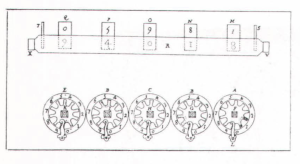
Data architects will have an increasing role in AI discussions, and may offer their usual cautionary perspective. When people ask how soon GenAI will take hold, they might keep this in mind.
So far, the major gauges for GenAI progress have been the hyperscalers’ capex accounting and Nvidia’s quarterly results. The latter came in last week, and the general picture appeared lackluster to muddy. Only Nvidia’s tremendous three-year upsurge can explain the use of the ‘lackluster’ term; its sales jumped +56% in the quarter. [See footnote to this story.]
What’s happening with the Generative AI juggernaut may hinge a lot on results of firms like Snowflake, makers of the noted cloud-based data platform.
A quick view on that came via Mandeep Singh, Global Head for Technology Research at Bloomberg. He spoke on Bloomberg Podcasts just as both Nvidia and Snowflake numbers came in. The context was today’s general search for a defined timeline for GenAI deployment and monetization.
What’s going on now, Singh says, is that companies are plying through their own enterprise data. They do this in order to create specialized AI agents that bring the power of LLMs to desktops.
“That’s where someone like Snowflake or MongoDB benefits, because your training is getting a lot more specialized depending on the use case,” he said. “It’s not just about the compute cluster anymore, but also about the data. I think that points to why Snowflake is doing well.”
In fact, the company beat Wall Street expectations for both earnings per share (EPS) and revenue. Quarterly revenue grew 32% Y2Y, to $1.14 billion. The company cited adoption of AI tools as a growth driver.
The importance of cloud and on-premises databases and data warehouses in this regard would be emphasized this week as OpenAI bought Statsig and its “data warehouse native” platform for, of course, something in the neighborhood of $1 Billion. -JV
~~~~~~~~~~~~~~~~~~~~
Footnote – Nvidia leader Jensen Huang and his company are caught right now between China leader Xi Ping and US leader Donald Trump, both pursuing new forms of State Capitalism or Capitalist Statism. The Era is still searching for a name.



